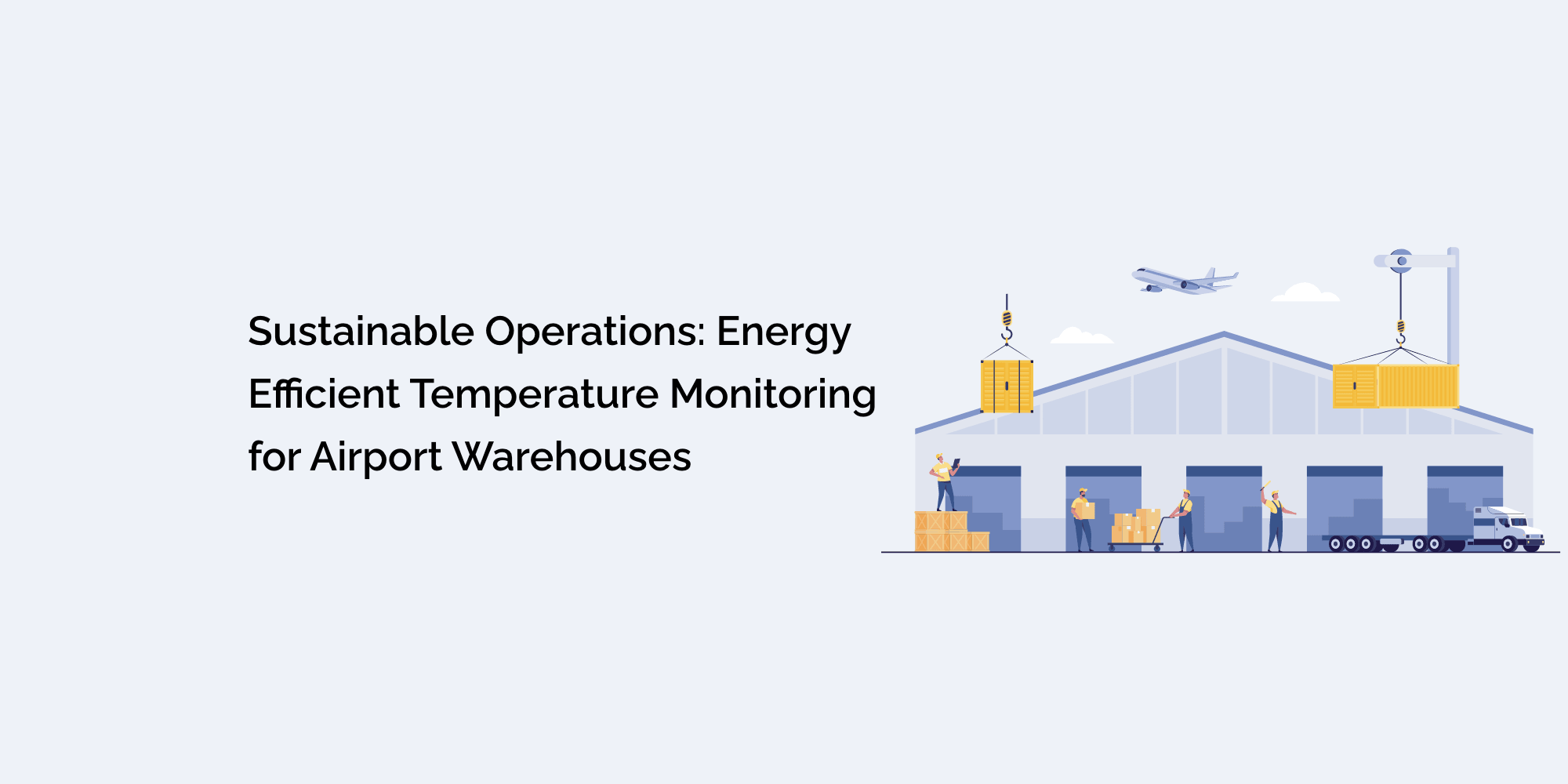In today's environmentally conscious world, sustainability has become a central focus across industries, including aviation. Airport warehouses, as crucial nodes in the supply chain, play a vital role in handling and storing temperature-sensitive goods.
The efficient management of temperature conditions is not only essential for preserving product quality but also for minimizing energy consumption. Embracing energy-efficient temperature monitoring solutions is a key component of sustainable operations in airport logistics.
In this comprehensive blog, we delve into the importance of sustainable practices, the challenges faced, and the adoption of energy-efficient temperature monitoring technologies to drive eco-friendly airport warehouse operations.
-
The Imperative for Sustainable Operations in Airports
As global awareness of climate change and environmental impact grows, industries worldwide are striving to adopt sustainable practices. Airports, being significant contributors to carbon emissions, have a responsibility to mitigate their ecological footprint.
Sustainable operations in airport warehouses encompass various initiatives, from reducing energy consumption to optimizing waste management. Focusing on energy-efficient temperature monitoring is a pivotal step in achieving sustainability goals.
-
The Environmental Impact of Airport Warehouses
Airport warehouses handle a wide range of goods, including perishable items like pharmaceuticals, fresh produce, and temperature-sensitive cargo. Traditional temperature monitoring methods, such as constant HVAC systems, often result in excessive energy consumption.
This not only increases operating costs but also contributes to greenhouse gas emissions. Adopting energy-efficient temperature monitoring solutions can substantially reduce the environmental impact of airport warehouses.
-
Energy-Efficient Temperature Monitoring Solutions
a. IoT-Based Smart Sensors:
Internet of Things (IoT) technology has revolutionized temperature monitoring by enabling smart sensors that provide real-time data. These sensors are strategically placed within the warehouse and cargo containers, continuously measuring and recording temperature fluctuations. The data collected is transmitted to a central platform for analysis, allowing for timely interventions and optimal energy management.
b. AI-Driven Predictive Analysis:
Artificial Intelligence (AI) enhances energy-efficient temperature monitoring through predictive analysis. Machine learning algorithms analyze historical temperature data to identify patterns and predict potential deviations. This proactive approach allows warehouse managers to optimize HVAC systems, reducing energy usage while maintaining product integrity.
c. Zoning and Smart HVAC Systems:
Energy-efficient temperature monitoring can be further enhanced through zoning systems. Warehouse spaces are divided into zones based on temperature requirements, allowing precise HVAC adjustments in specific areas. Smart HVAC systems equipped with IoT technology can optimize energy usage based on real-time temperature data, reducing overall energy consumption.
-
Benefits of Energy-Efficient Temperature Monitoring
a. Reduced Energy Consumption:
By adopting energy-efficient temperature monitoring solutions, airport warehouses can significantly reduce energy consumption. This not only lowers operating costs but also helps airports meet sustainability targets by minimizing carbon emissions.
b. Preserving Product Quality:
Energy-efficient temperature monitoring ensures that temperature-sensitive goods are stored at optimal conditions, reducing the risk of spoilage or damage. This preserves product quality and minimizes waste, contributing to sustainable practices.
c. Regulatory Compliance:
Sustainable operations in airport warehouses include adherence to environmental regulations. Energy-efficient temperature monitoring solutions can help airports comply with energy efficiency standards and environmental certifications.
-
Overcoming Challenges in Implementing Energy-Efficient Temperature Monitoring
a. Initial Investment:
The adoption of energy-efficient temperature monitoring solutions may require an initial investment. However, the long-term cost savings and environmental benefits make it a worthy investment for sustainable operations.
b. Technological Integration:
Integrating IoT, AI, and smart HVAC systems into existing warehouse infrastructure requires careful planning and technical expertise. However, working with experienced technology providers can streamline the integration process.
c. Data Security and Privacy:
Handling sensitive temperature data necessitates robust security measures to protect against potential breaches. Ensuring data privacy and compliance with regulations is paramount.
-
Case Studies of Successful Implementations
a. Copenhagen Airport:
Copenhagen Airport implemented energy-efficient temperature monitoring in its cargo warehouse, resulting in a 40% reduction in energy consumption. Real-time temperature data and predictive analysis allowed precise control of HVAC systems, ensuring energy was used only where needed.
b. Changi Airport, Singapore:
Changi Airport integrated IoT-based smart sensors and AI-driven predictive analysis to optimize temperature control in its warehouses. The implementation led to a 30% reduction in energy consumption, with substantial cost savings and environmental benefits.
-
The Path Towards a Sustainable Future
As the aviation industry evolves, the drive towards sustainability becomes increasingly vital. Energy-efficient temperature monitoring is a crucial component of sustainable operations in airport warehouses. By adopting IoT, AI, and smart HVAC systems, airports can significantly reduce energy consumption, preserve product quality, and contribute to a greener future.
Conclusion
Airport warehouses are fundamental pillars of global trade, handling a diverse array of goods daily. Ensuring energy-efficient temperature monitoring is a vital step in fostering sustainable operations within the aviation industry.
By embracing innovative solutions such as IoT-based smart sensors, AI-driven predictive analysis, and smart HVAC systems, airports can minimize energy consumption, reduce their environmental impact, and pave the way for a more sustainable future. The journey towards sustainability requires collaborative efforts from industry stakeholders, and energy-efficient temperature monitoring is a proactive step towards a greener tomorrow.








